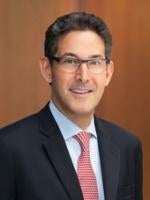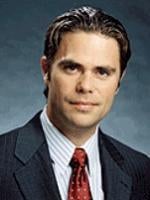On August 15, 2011, the United States District Court for the Southern District of New York dismissed certain false and deceptive advertising claims brought under the Lanham Act by a group of design professionals against the U.S. Green Building Council (“USGBC”). See Gifford et al., v. U.S. Green Building Council et al., Case No. 10 Civ. 7747, (S.D.NY 2011). While the Plaintiffs claimed damages in connection with alleged false statements regarding the energy and money-saving aspects of the Leadership in Energy and Environmental Design (“LEED”) certification system, the court dismissed Plaintiffs’ claims because they could not establish that they compete with the USGBC, a 501(c)(3) exempt organization based in Washington D.C. that oversees the LEED initiative. The following discussion of the lawsuit illustrates the frustration and challenges in framing a claim based on the LEED certification process.
With the ever growing popularity of LEED certified project delivery systems, most contractors are intimately familiar with the USGBC. For those of you who are not familiar with LEED, the USGBC certifies buildings as being designed and constructed in an environmentally friendly manner. LEED certification is point-based, with points awarded for the use of sustainable materials, efficient use of water, and other features aimed at improving the environmental performance of the structure in question. In general, the LEED certification process does not assess the actual environmental performance of any of the structures for which certification is sought or granted, but certifies that they were designed in a way that should result in better performance.
The Plaintiffs are professionals in the environmental engineering and design industry. They alleged in the suit that USGBC’s advertising contained false statements regarding the energy and money-saving aspects of LEED certification. Specifically, Plaintiffs pointed to a USGBC press release dated April 3, 2008, which stated that the results of a 2008 study “indicate that new buildings certified under the [USGBC’s] LEED certification system are, on average, performing 25–30% better than non-LEED certified buildings in terms of energy use.” Id. at pp. 2-3. Plaintiffs alleged that this claim was false, and the study, which was sponsored by USGBC, was seriously flawed. Because the statement misleads consumers, Plaintiffs alleged that it diverted customers from their businesses to LEED accredited professionals. Thus, Plaintiffs alleged that they suffered or will suffer “a loss of consumer confidence, sales, profits, and goodwill, along with the cost of remedial corrective consumer education.” Id. They also alleged that the misstatement “harms consumers who may spend significant amounts of money on LEED certification but will not experience energy savings.” Id.
Regardless of the potential merit of Plaintiffs’ claims that the 2008 study was false, the court dismissed the Lanham Act claims because the plaintiffs could not establish that they competed with the USGBC and, therefore, lacked standing to sue. Consistent with other courts from the Second Circuit, the courtapplied the “strong categorical” and “reasonable commercial interest” tests for standing. Under the strong categorical test, “the plaintiff must be a competitor of the defendant” and allege a competitive injury. Under the reasonable commercial interest approach, the plaintiff must demonstrate: (i) a reasonable interest to be protected against the alleged false advertising; and (ii) a reasonable basis for believing that the interest is likely to be damaged by the alleged false advertising.Id. at p. 4, quoting Telecom Int’l Am., Inc. v. AT&T Corp., 280 F.3d 175, 197 (2d Cir. 2001).
The court held that the Plaintiffs could not establish standing under either test because “Plaintiffs plainly do not compete with USGBC in the certification of ‘green’ buildings or the accreditation of professionals.” Id. at p. 5. Rather, “Plaintiffs are alleged to provide real estate developers and other clients advice about how to design and construct energy efficient buildings.” Id. Moreover, the USGBC does not provide clients with advice about energy-efficient design; nor does it provide design services relating to any of the fields in which Plaintiffs specialize. Rather, it is a not-for-profit organization that reviews and rates designs created by others. While some of Plaintiffs’ competitors in their individual fields may be LEED accredited, Plaintiffs and USGBC “operate in different arenas.” Id at pp. 5-6. (citations omitted).
The court also held that “Plaintiffs do not adequately allege a reasonable commercial interest that is likely to be damaged by USGBC’s alleged false statement—the press release indicating that new LEED certified buildings perform on average ‘25–30% better than non-LEED certified buildings in terms of energy use.’” Id. at p. 6. According to the court, “the ‘reasonable basis’ prong requires the plaintiff to show ‘both likely injury and a causal nexus to the false advertising.’” Id. As to likely injury, the court held that Plaintiffs’ allegation that “LEED has begun to subsume the Plaintiffs’ roles” is “entirely speculative.” Id. The court observed that “Plaintiffs do not allege that LEED certified buildings do not require such services or that those services must be provided by a LEED-accredited professional in order to attain certification. Because there is no requirement that a builder hire LEED-accredited professionals at any level, let alone every level, to attain LEED certification, it is not plausible that each customer who opts for LEED certification is a customer lost to Plaintiffs.” Id.
On these grounds the court dismissed Plaintiffs’ Lanham Act claims with prejudice. With respect to the NewYork deceptive trade practices claims, the court held that because the federal claims upon which jurisdiction was predicated were dismissed, Plaintiffs’ state law claims were properly dismissed as well but without prejudice. It remains unclear at this time if the plaintiffs will try to pursue their remaining claims in state court.





 />i
/>i
